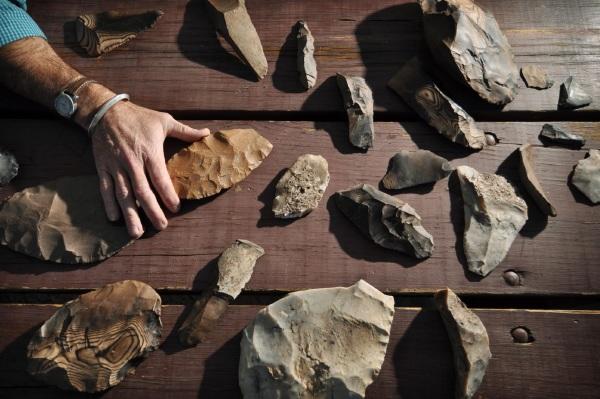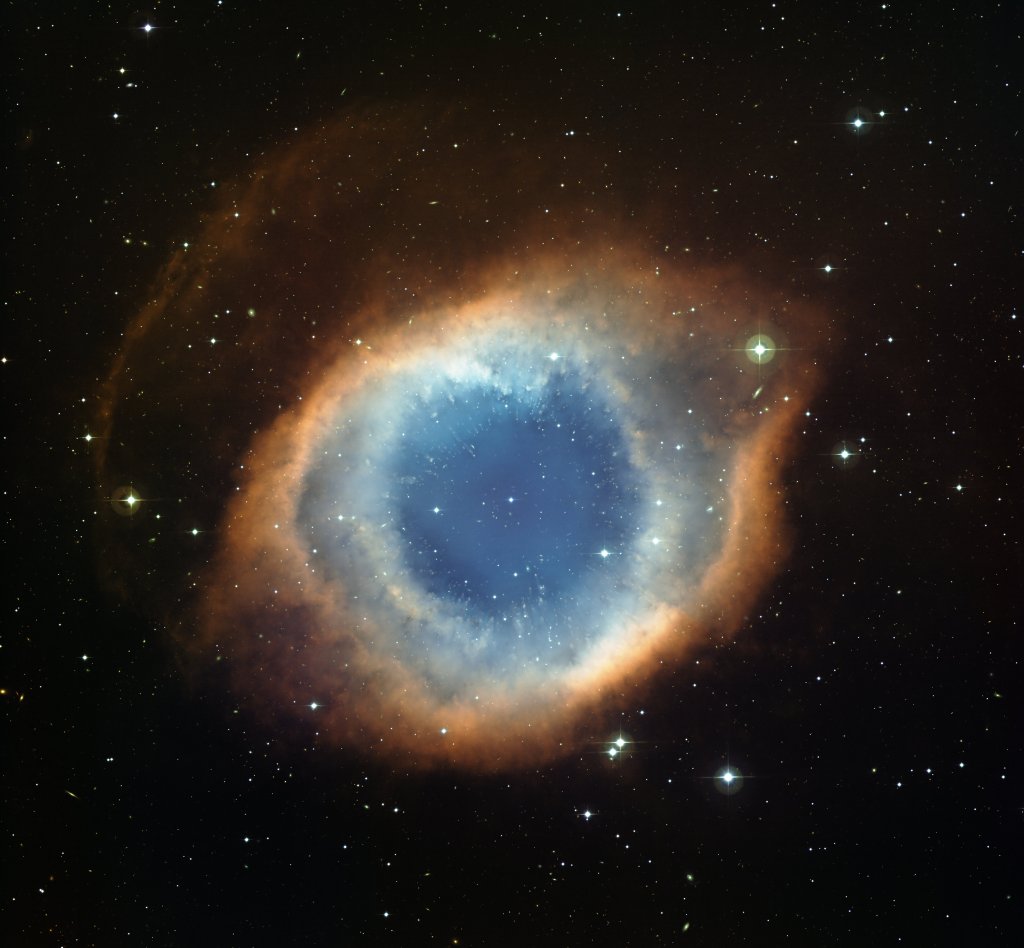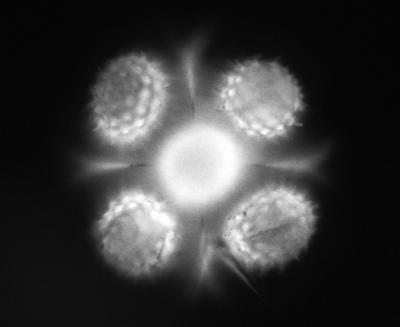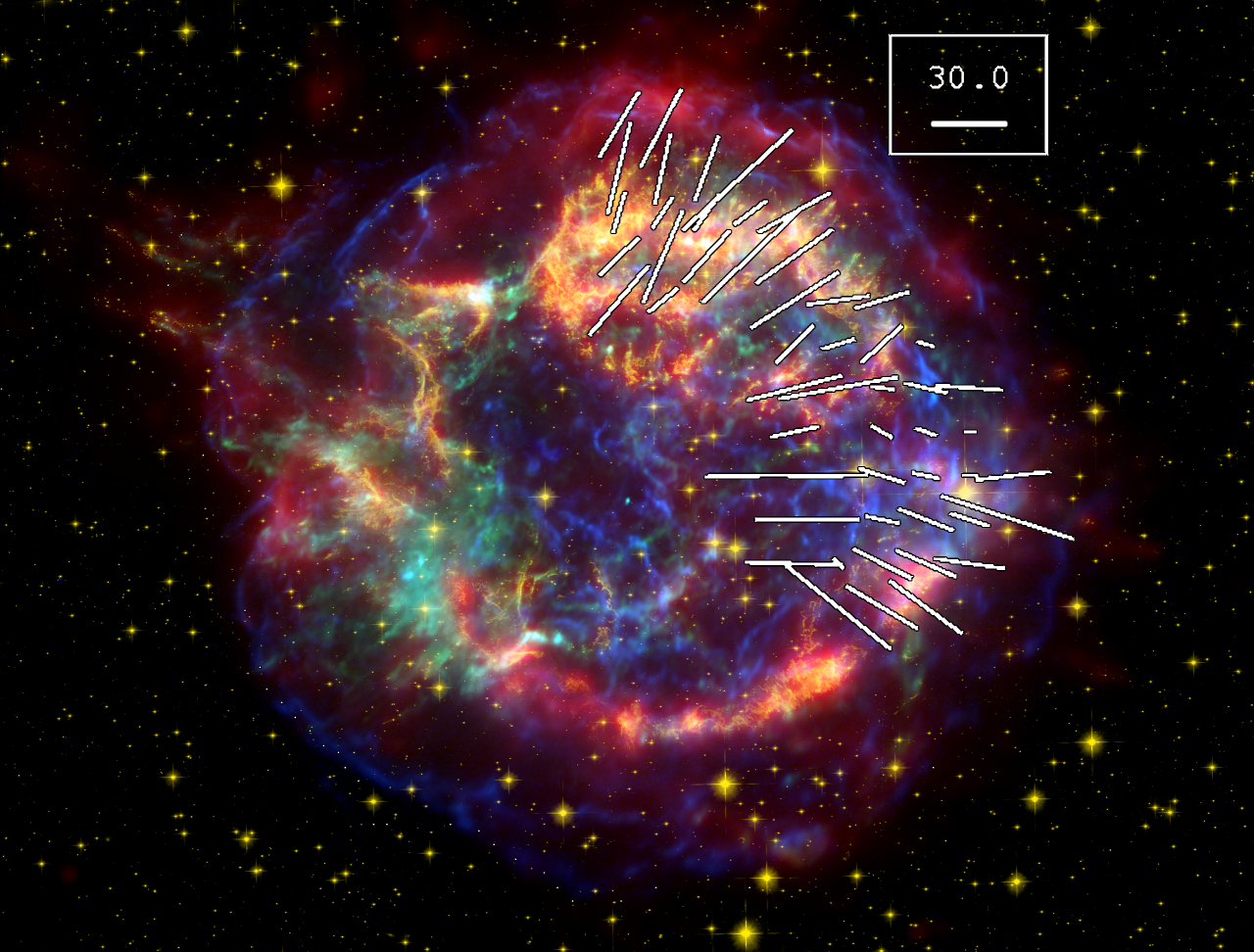A biochemical analysis of a rare Clovis-era stone tool cache recently unearthed in the city limits of Boulder, Colo., indicates some of the implements were used to butcher ice-age camels and horses that roamed North America until their extinction about 13,000 years ago, according to a University of Colorado at Boulder study.
The study is the first to identify protein residue from extinct camels on North American stone tools and only the second to identify horse protein residue on a Clovis-age tool, said CU-Boulder Anthropology Professor Douglas Bamforth, who led the study. The cache is one of only a handful of Clovis-age artifact caches that have been unearthed in North America, said Bamforth, who studies Paleoindian culture and tools.
A deep new image of the magnificent Helix planetary nebula has been obtained using the Wide Field Imager at ESO's La Silla Observatory. The image shows a rich background of distant galaxies, usually not seen in other images of this object.
A team of Vanderbilt scientists have invented what is basically the world's smallest periscope and are using it to look at cells and other micro-organisms from several sides at once.
The researchers have officially dubbed these devices "mirrored pyramidal wells" and they consist of pyramidal-shaped cavities molded into silicon whose interior surfaces are coated with a reflective layer of gold or platinum. They are microscopic in dimension – about the width of a human hair – and can be made in a range of sizes to view different-sized objects. When a cell is placed in such a well and viewed with a regular optical microscope, the researcher can see several sides simultaneously.
We learn a lot from genes but it turns out we can learn even more - like where you lived or even who you spent time with. It just requires knowing where and how to look.
Researchers from Stanford and Tel-Aviv University are using a technique called "reverse ecology" to examine metabolic networks and pull out proxies for reconstructing bacterial environments millions of years in the past. The work, published in the February issue of the Journal of Computational Biology, offers clues to the complex evolutionary interplay between organisms such as parasites and hosts.
Interstellar space dust from a dead star identified by a research team led by The University of Nottingham could unlock some of the mysteries of the early universe.
Dr Loretta Dunne and her team have found new evidence of huge dust production in the Cassiopeia A supernova remnant, the remains of a star that exploded about 300 years ago. The paper is set to be published in the Monthly Notices of the Royal Astronomical Society.
White people are having a tough 2009. And it's going to get worse if new research in the Journal of Personality and Social Psychology is accurate. A series of six studies conducted by University of Washington and Michigan State University psychologists says that whites react more negatively to racial minority individuals who strongly identify with their racial group than to racial minority individuals who weakly identify with their group.
The research, they say, may provide evidence for the claim from some blacks that they personally experience more prejudice than they see others receiving.
 Study: Caloric Restriction In Humans And Aging
Study: Caloric Restriction In Humans And Aging Science Podcast Or Perish?
Science Podcast Or Perish? Type 2 Diabetes Medication Tirzepatide May Help Obese Type 1 Diabetics Also
Type 2 Diabetes Medication Tirzepatide May Help Obese Type 1 Diabetics Also Life May Be Found In Sea Spray Of Moons Orbiting Saturn Or Jupiter Next Year
Life May Be Found In Sea Spray Of Moons Orbiting Saturn Or Jupiter Next Year









